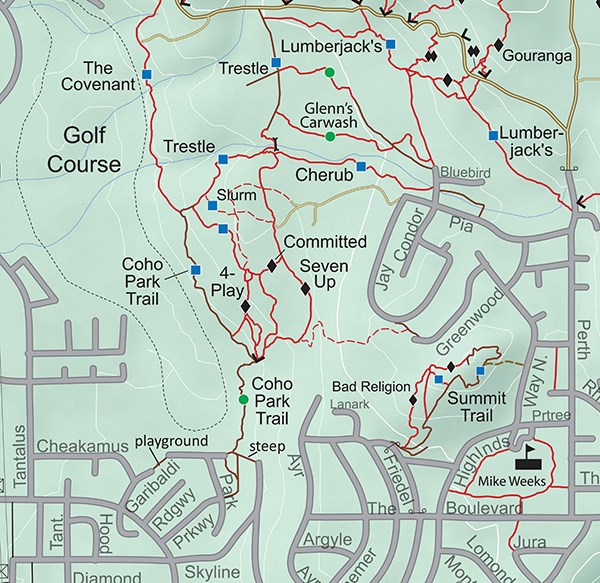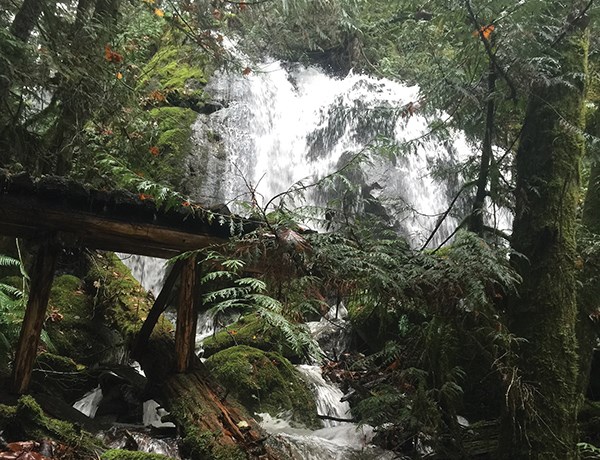Coho Park is a beautiful example of a rare urban, temperate rainforest area, one where the forest floor is covered by ferns, mosses and small plants.
Lichens grow on tree trunks and rocks. This type of forest is found on the West Coast because moist air from the Pacific Ocean drops an average of 279 centimetres (110 inches) of rain here each year.
The zone from southeast Alaska to northern California is the largest area of temperate rainforest in the world. The canopy of tall conifers generally shuts out at least 70 per cent of the sky, resulting in less biodiversity. The climate in a temperate rainforest does not have extreme range and is generally comfortable year round.
The big cedars are of great importance to the way of life and culture of Squamish Nation people.
Forestry resource extraction and urbanization are the main threats to retaining these valuable climate-dampening forests. Climate warming also threatens the giant trees. Coho salmon prefer to spawn in a water flow of medium velocity and on smaller gravel beds. This means that they use small streams and even smaller tributaries like Meighan Creek, which runs through this park. The coho must use many such small streams to successfully reproduce.
Coho can be found in almost every small coastal watercourse. They have long been in Meighan Creek, which flows down from the Garibaldi escarpment out of the park and through a culvert under Highway 99 to the Squamish River near Eagle Run. There has been an average count of 7670 smolts over the past decade and that makes this watercourse a very productive salmon habitat. But there are pressures on the spawning salmon and these include backyard pesticides, dog waste and children playing in the stream.
The Invasive Species Council has identified the spread of decorative non-native plants and shrubs as a concern. Laurel and periwinkle jettisoned from private gardens are an unnecessary burden for indigenous plants. Better to deliver these to the landfill for proper disposal and help save our environment. The skunk cabbage in the park is eaten by bears after they emerge from hibernation.
Pat Goode Park nearby is named after a councillor who represented the area when it amalgamated into Squamish in 1964.
Coho Trail leads north and up the escarpment to link with the many trails of Garibaldi Highlands and Alice Lake. The steep trail leading east and up to Ayr Drive will also link to the highlands trails. Venturing up Coho and down 4 Play will provide a fine 1.8-kilometre loop. A good hour of jogging will get you to Alice Lake and back. Trail runners enjoy the area, and climbers are attracted to some of the boulders along the escarpment.
Coho Park Trail
Gentle streams with low boardwalks entice you out of this pleasant park towards the plethora of trails in Garibaldi Highlands.
Origin of name: Coho is the indigenous name for the silver salmon of the Pacific Ocean that spawn in the stream in the park.
Trailhead: end of Parkway Place Road.
Parking: limited at the trailhead; more space is available behind the fire hall.
Use: single track, multi use.
Difficulty: green to blue.
Elevation: 8 metres to 49 metres.
Etiquette: Be courteous and share the trail.




